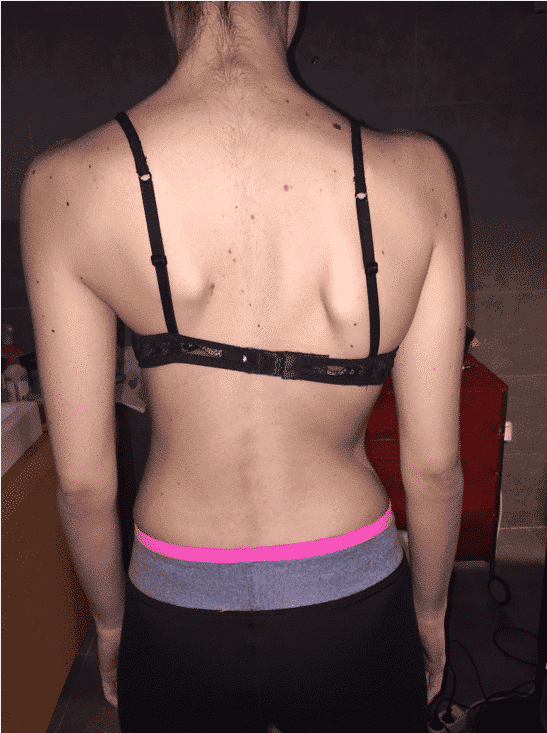Neuromotor reprogramming and idiopathic scoliosis
Idiopathic scoliosis and rehabilitation
Idiopathic scoliosis is a multifactorial, three-dimensionalpostural deficiency syndrome whose treatments, whether physiotherapeutic or orthopedic, are often disappointing and sometimes ineffective.
Mézières, Klapp, Ling, Charrière et Roy, Niederhoffer, Schroth, each with their own particularities, have given rise to the modern concepts of scoliosis rehabilitation applied in most of our practices. Global re-education, neuromotor adjustments, proprioceptivity, postural control, stretching and selective muscle reinforcement make up a panoply of exercises that combine mobility, posture and balance in a body in tune with our brain's consciousness. And therein lies the difficulty of the exercise, for while muscular perception of even complex movement is well corticalised and easily identifiable, proprioceptivity of deep, short, mono-articular postural muscles is less so, if at all. Hence the difficulty of modifying posture and innate movements such as walking, running or breathing. Somaesthetic pathways converge on the thalamus, the relay that enables sensory-motor and multisensory integration of information, but it should be remembered here that the vector of this information is proprioceptive, neither verbal nor visual.

Neuromotor reprogramming in the treatment of idiopathic scoliosis
I have been working for more than ten years in neuromotor reprogramming, initially in sports movement and then on pathologies that have consequences on our motor skills. I have been using the Allyane process for a few years on scoliosis with some success. The major advantage of this procedure is that it allows first of all the deprogramming of the "scoliotic attitude " and generates a proprioceptive message which informs us that this attitude is not the right one. The awareness of the posture is initially based on visual video information on the 3 planes, frontal, sagittal and especially from the back, because this image, not being in the visual field, is very difficult to conceive.
Then, we associate these images with relevant proprioceptive informationWe then associate these images with a series of images, both statically and dynamically, and finally virtually in the imaginary.
Once the subject is able to visualise himself and imagine the 3D image of his scoliosis with the associated sensations, we work on the corrective aspect. He modifies his posture in an average and not extreme corrective state, always associated with the video. He records the new associated musculo-tendinous sensations and translates them into a mental image. A work on a retroversion of the pelvis can very well lead him to feel and visualize a completely different plantar support. This information is his own and is therefore both unique and relevant.
Once this proprioceptive identification work is complete, the patient lies on a massage table with headphones transmitting sequences of pulsed low-frequency sounds from the Alphabox (a patented low-frequency sound-generating medical device). These sounds are designed to put the patient into alpha mode and hyper-activate motor areas. After a few minutes, he will work on two levels ofmental imagery: he will deprogram his scoliotic attitude by imagining himself as he is on a daily basis, and then he will imagine his body without the trunk. He will then listen to a referent sound of his choice from among several frequencies, called the S.A. (associated sound), enabling him to anchor himself.
When this deprogramming is done, he will reprogram his new posture by imagining himself in the corrected attitude with the associated proprioceptive sensations and again, he will make a new sound anchoring with the S.A. according to a precise protocol including repetitions.
At the end of the session, without any conscious-voluntary effort, he will adopt the new posture, whether static or dynamic. The following days may be a little painful because many postural muscles will be activated, but after a week, he will have a corrected posture, known as acquired, which will not require any particular effort. He will therefore have created a virtual corset which will be a compromise between a maximum correction and his previous posture. After a few months, we will be able to programme a posture that is a little more demanding in terms of muscle activation.
This does not, of course, in any way preclude follow-up re-education sessions. On the contrary, the patient will be much more receptive because we will have created or reaffirmed a neuro-sensoriality of a certain number of postural muscles which will be able to work much more efficiently.
During the same session, we also reprogramme breathing work to support the correction.

